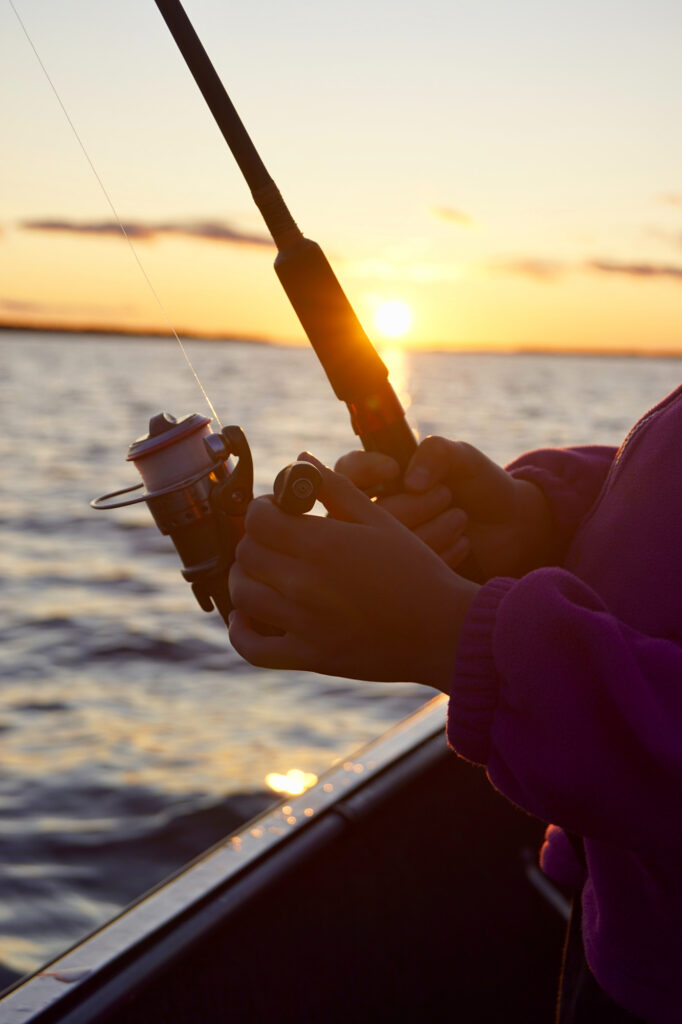
The Puget Sound lingcod fishing season gets underway on May 1, and while these toothy, bucket-mouthed fish won’t win any beauty contests, anglers are always attracted to the good fight they put up. Plus, any struggle is well-rewarded as lingcod is one of the better tasting creatures in the sea.
Lingcod populations in inner-Puget Sound hit bottom in the 1970s due to overfishing, but improved management in the early ‘80s allowed them to regain strength and their numbers have remained strong enough to allow sport fishing in spring and early summer. Lingcod catches have been decent in recent years in the San Juan Islands (Marine Area 7), Saratoga Pass (Marine Area 8-1), and northern Puget Sound (Marine Area 9). Places seeing a decline in success include Port Susan and Port Gardner, and central and southcentral Puget Sound (Marine Areas 8-2, 10, and 11).
The sport lingcod fishery is open daily through June 15 in the Strait of Juan de Fuca from Sekiu to Port Angeles (Marine Areas 5 and 6), San Juan Islands (Marine Area 7), and most of Puget Sound (Marine Areas 8-1, 8-2, 9, 10, 11 and 13).
The lingcod daily limit is one per angler. Minimum size limit is 26 inches and maximum size is 36 inches. This slot limit is a key reason why lingcod populations have remained somewhat healthy in Puget Sound and includes releasing the over-sized females.
Keys to Lingcod Success
Locating some sort of structure on the bottom of the ocean floor is key to sleuthing out lingcod, usually found around rocky pinnacles, reefs, rock piles, steep drop-offs or ledges, a breakwater or jetty, or almost any hard rocky bottom. In most instances, anglers don’t need to fish that deep and can find lingcod lurking at depths from 50 to 90 feet. Having a fish finder is a valuable tool when it comes to finding lingcod holes.
The easiest spot to find them are near the breakwater at local marinas although they tend to get cleaned out rather quickly. For shore anglers, local piers around Puget Sound offer the best chance to catch lingcod.
Usually, the best time is an hour before and after slack tide—high or low tide depends on the location—since it’s the timeframe that allows you to keep your presentation right in front of the lingcod’s face. Be keenly aware of when the current is running hard and/or the wind is blowing. During these periods you’re likely to snag and lose tackle around rocky structures or you’ll zip right over a fishing hole before you even get your lines down to the lingcod hotspots. This is where positioning your boat becomes important.
Lingcod are nonmigratory, rather solitary, and predatory creatures who don’t appreciate anything coming into their territory. They like to hide in their lair and jump out at unaware prey swimming nearby.
Puget Sound sees heavy angling pressure when the season kicks off, and they tend to get fished out quickly of keeper-sized lingcod.
Target lingcod around reefs south at Richmond Beach, north of the Edmonds Marina and southeast of Alki Point; the rocky breakwaters off the Pier 91 Marina in Elliott Bay, the Shilshole Bay Marina and the Edmonds Marina; the San Juan Islands; Point Evans near the Narrows Bridge; Possession Bar; Toliva Shoal off Steilacoom; Alki Point Lighthouse off West Seattle; Itsami Ledge off Henderson Inlet’s north end; Utsalady Bay; Smith Island; and Burrows Island.
Once the Puget Sound lingcod fishery ends, head to Neah Bay, La Push, Westport and Ilwaco (Marine Areas 1, 2, 3 and 4), which are open daily through Oct. 21. The western Strait from Sekiu River mouth west to the Bonilla-Tatoosh border (Area 4) is open daily through October 21 for lingcod. Those without a boat can try coastal jetties at Westport, Cape Disappointment near Ilwaco, and Ocean Shores. Jetties can be hazardous places, so pay close attention to weather conditions, sneaker waves, and slippery rocks and boulders.
Coastal Razor Clam Digs a Possibility in May
Tentative razor clam digging dates for Long Beach and Twin Harbors are May 4-14; Copalis is May 4, 6, 8, 10, 12 and 14; and Mocrocks is May 5, 7, 9, 11 and 13. Final approval will be announced by Washington Department of Fish & Wildlife (WDFW) when marine toxin tests show it is safe, usually a week prior to the scheduled start dates.
Digging is allowed during low tide from 12 a.m. through 11:59 a.m. only from May 4-10 on open coastal beaches. Digging will be extended from 4 a.m. through 4 p.m. only on May 11-14 to coincide with the later early afternoon low tides. On open beaches—Long Beach, Twin Harbors, Mocrocks, and Copalis—the daily limit for tentative digs is 20 clams instead of the usual 15. Each digger’s clams must be kept in a separate container. All diggers must keep the first 20 clams they dig, regardless of size or condition.
WDFW is asking beachgoers to avoid disturbing nesting snowy plover birds by staying out of the dunes and areas clearly posted with signs on the southern end of Twin Harbors, known as Midway Beach, and the north end of Long Beach. For details, go to the WDFW’s razor clam webpage at: wdfw.wa.gov/fishing/shellfishing-regulations/razor-clams.